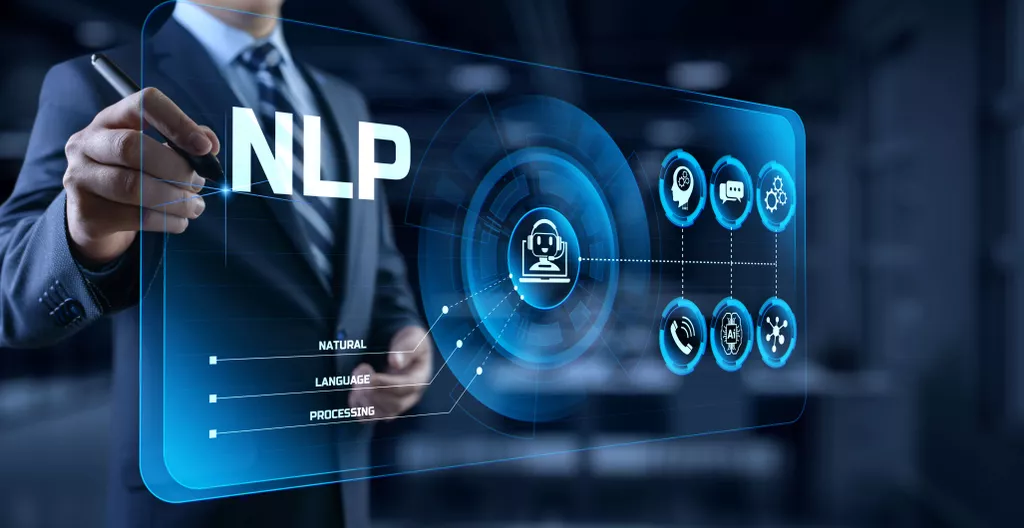iSEA: An Interactive Pipeline for Semantic Error Analysis of NLP Models

Semantic search engines, on the other hand, analyze the meaning and context of the user’s query to provide more accurate and relevant results. This not only improves the user experience but also helps businesses and researchers find the information they need more efficiently. This analysis gives the power to computers to understand and interpret sentences, paragraphs, or whole documents, by analyzing their grammatical structure, and identifying the relationships between individual words of the sentence in a particular context. One can train machines to make near-accurate predictions by providing text samples as input to semantically-enhanced ML algorithms. Machine learning-based semantic analysis involves sub-tasks such as relationship extraction and word sense disambiguation. The semantic analysis process begins by studying and analyzing the dictionary definitions and meanings of individual words also referred to as lexical semantics.
For example, semantic processing is one challenge while understanding collocations is another. NLP has existed for more than 50 years and has roots in the field of linguistics. It has a variety of real-world applications in a number of fields, including medical research, search engines and business intelligence.
What Are The Three Types Of Semantic Analysis?
In the ever-expanding era of textual information, it is important for organizations to draw insights from such data to fuel businesses. Semantic Analysis helps machines interpret the meaning of texts and extract useful information, thus providing invaluable data while reducing manual efforts. Chatbots help customers immensely as they facilitate shipping, answer queries, and also offer personalized guidance and input on how to proceed further. Moreover, some chatbots are equipped with emotional intelligence that recognizes the tone of the language and hidden sentiments, framing emotionally-relevant responses to them. When queried about concepts that they would find most useful for hypothesis testing, all three experts mentioned concepts related to model bias, for example race or gender.
What Is Natural Language Processing? (Definition, Uses) – Built In
What Is Natural Language Processing? (Definition, Uses).
Posted: Tue, 17 Jan 2023 22:44:18 GMT [source]
Furthermore, we discuss the technical challenges, ethical considerations, and future directions in the domain. Nowadays, web users and systems continually overload the web with an exponential generation of a massive amount of data. This leads to making big data more important in several domains such as social networks, internet of things, health care, E-commerce, aviation safety, etc. The use of big data has become increasingly crucial for companies due to the significant evolution of information providers and users on the web. In order to get a good comprehension of big data, we raise questions about how big data and semantic are related to each other and how semantic may help.
Challenges to LSI
The document projection view (Fig. 3③) on the top provides an overview of the document distribution. In this view, each point represents a document in the data set, and the color indicates whether this document is predicted correctly by the model. Then we apply t-SNE [28], a dimensionality reduction technique, to project the high-dimensional document embedding vectors to a 2-dimensional space. These techniques ensure that semantically similar documents are also closer in the 2D space. The model performance view (Fig. 3①) provides an overview of the model and data, including the overall accuracy, the baseline error rate, as well as a preview of tokens and high-level feature values that describe subpopulations with a high error rate. By reading the information in this view, users can gain a general understanding of the model performance and the potential causes of errors.
- This can be especially useful for programmatic SEO initiatives or text generation at scale.
- In this paper, we propose xLSA, an extension of LSA that focuses on the syntactic structure of sentences to overcome the syntactic blindness problem of the original LSA approach.
- E.g., “I like you” and “You like me” are exact words, but logically, their meaning is different.
- NLP can be used to create chatbots and other conversational interfaces, improving the customer experience and increasing accessibility.
- Any object that can be expressed as text can be represented in an LSI vector space.
- Once the user selects or creates a specific rule, the statistics for that subpopulation will be shown under the tab of Subpopulation stat.
Semantic Analysis is the last soldier standing before the back-end system receives the code, if the front-end goal is to reject ill-typed codes. LSI is also an application of correspondence analysis, a multivariate statistical technique developed by Jean-Paul Benzécri[20] in the early 1970s, to a contingency table built from word counts in documents. This matrix is also common to standard semantic models, though it is not necessarily explicitly expressed as a matrix, since the mathematical properties of matrices are not always used. 2In Python for example, the most popular ML language today, we have libraries such as spaCy and NLTK which handle the bulk of these types of preprocessing and analytic tasks. Please complete this reCAPTCHA to demonstrate that it’s you making the requests and not a robot. If you are having trouble seeing or completing this challenge, this page may help.
Applications in human memory
A not-for-profit organization, IEEE is the world’s largest technical professional organization dedicated to advancing technology for the benefit of humanity.© Copyright 2023 IEEE – All rights reserved. To save content items to your account,
please confirm that you agree to abide by our usage policies. If this is the first time you use this feature, you will be asked to authorise Cambridge metadialog.com Core to connect with your account. Semantic analysis also takes collocations (words that are habitually juxtaposed with each other) and semiotics (signs and symbols) into consideration while deriving meaning from text. Named entity recognition (NER) concentrates on determining which items in a text (i.e. the “named entities”) can be located and classified into predefined categories.

Synonymy is the case where a word which has the same sense or nearly the same as another word. The idea of entity extraction is to identify named entities in text, such as names of people, companies, places, etc. For Example, you could analyze the keywords in a bunch of tweets that have been categorized as “negative” and detect which words or topics are mentioned most often. This technique is used separately or can be used along with one of the above methods to gain more valuable insights.
Classification Models:
To better support the error analysis, we defined three types of features to describe subpopulations and four principles for more interpretable rule representation. Although error analysis usually starts from the learning stage where users gain a general understanding of model performance and error distribution, users may enter the pipeline at any stage and finish their tasks in a flexible manner. For example, if a model developer is already familiar with the data and model behaviors, they may prefer to test hypotheses directly and then validate the generated insights. Deep semantic analysis example essentially builds a graphical model of the word-count vectors obtained from a large set of documents. Documents similar to a query document can then be found by simply accessing all the addresses that differ by only a few bits from the address of the query document.
It allows the computer to interpret the language structure and grammatical format and identifies the relationship between words, thus creating meaning. The seed dictionary of semi-supervised method made before 10 predicted word accuracy of 66.5 (Tibetan-Chinese) and 74.8 (Chinese-Tibetan) results, to improve the self-supervision methods in both language directions have reached 53.5 accuracy. This path of natural language processing focuses on identification of named entities such as persons, locations, organisations which are denoted by proper nouns. A pair of words can be synonymous in one context but may be not synonymous in other contexts under elements of semantic analysis. Semantic analysis is done by analyzing the grammatical structure of a piece of text and understanding how one word in a sentence is related to another. As we discussed, the most important task of semantic analysis is to find the proper meaning of the sentence.
Human Resources
In Semantic nets, we try to illustrate the knowledge in the form of graphical networks. The networks constitute nodes that represent objects and arcs and try to define a relationship between them. One of the most critical highlights of Semantic Nets is that its length is flexible and can be extended easily. The first-order predicate logic approach works by finding a subject and predicate, then using quantifiers, and it tries to determine the relationship between both.
- Semantic analysis helps to address this issue by using context to disambiguate words and phrases.
- For Example, you could analyze the keywords in a bunch of tweets that have been categorized as “negative” and detect which words or topics are mentioned most often.
- The semantic analysis process begins by studying and analyzing the dictionary definitions and meanings of individual words also referred to as lexical semantics.
- This tutorial’s companion resources are available on Github and its full implementation as well on Google Colab.
- In the final phase, we conducted a semi-structured interview which incorporated several questions about the overall usefulness, and general pros and cons of iSEA.
- There are various methods for doing this, the most popular of which are covered in this paper—one-hot encoding, Bag of Words or Count Vectors, TF-IDF metrics, and the more modern variants developed by the big tech companies such as Word2Vec, GloVe, ELMo and BERT.
What are the techniques of semantic analysis?
It is a method of extracting the relevant words and expressions in any text to find out the granular insights. It is mostly used along with the different classification models. It is used to analyze different keywords in a corpus of text and detect which words are 'negative' and which words are 'positive'.
